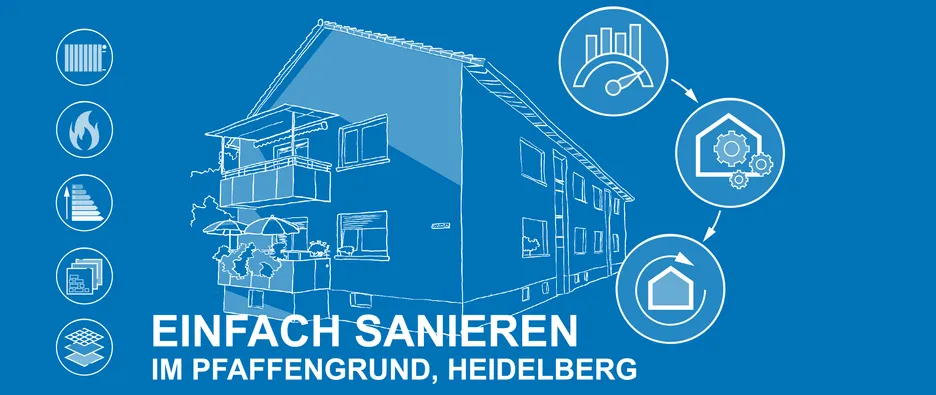Einfach Sanieren
Development of different refurbishment strategies to achieve CO2 neutrality of the GGH buildings at Pfaffengrund, Heidelberg
The major challenge of the coming decades is to transform the building stock sustainably, in particular through decarbonization. Years of establishing complexity in the construction sector, together with supposed comfort standards, have led to many buildings neither achieving the desired energy efficiency nor ensuring user satisfaction. A so-called "rebound effect" was demonstrated in a Danish study by Aalborg University, in which energy demand values were compared with the actual energy consumption values of over 130,000 single-family homes of different energy standards. The "Einfach Bauen" research project at the Technical University of Munich shows how this effect can be counteracted in new builds. This was demonstrated using three research houses from the B&O Group in Bad Aibling (Florian Nagler Architekten). The research houses illustrate the positive effects that experimental spaces and real laboratories can have.
But how can these approaches be applied to existing buildings? For a variety of reasons, the political goal of refurbishing existing buildings to the “Effizienzhaus Standard 55” (50% by 2030) is not an adequate response to the challenge. The frequently measured performance gap calls the German government's "Efficiency First" strategy into question. Furthermore, neither a "prebound effect" - the fact that existing buildings often require less energy than predicted - nor the use of so-called "gray energy" (CO2 emissions resulting from the construction measures) are taken into account. Full energy refurbishments are cost-intensive and result in high basis rent prices, which makes them unattractive for tenants and landlords. Taking into account gray emissions and pre- and rebound, the achievable savings of an EH 55 refurbishments are significantly lower than initially assumed. The savings compared to a minimally invasive refurbishment may only be very small. It can be hypothesized that simple refurbishment strategies are more effective and less expensive and would lead to an acceleration of the energy-efficient refurbishment of existing buildings. These simpler approaches for a sustainable transformation of existing buildings must be tested and proven in experimental spaces.
To this project, different refurbishment measures are being implemented and compared on 13 identical GGH terraced houses in Pfaffengrund, Heidelberg. A full refurbishment to EH 55 standard serves as a reference variant. Row buildings from the 1950s and 1960s are widespread and can be found in almost every city in Germany. One focus of the research project is the monitoring of energy requirements, in building operation before and after the refurbishment, so that trends in user behavior (rebound effect) and performance gap can be derived. The basic principles of the individual refurbishment options will be developed in the first half of 2024 so that the structural implementation can take place in summer 2024 and the monitoring can already be carried out in winter 24/25. The GGH is responsible for the planning, tendering, construction management and implementation of the buildings (not part of the research project). Furthermore, adding another storey offers the potential to expand living space, with energy-efficient refurbishment becoming a by-product.
The research project provides valuable insights into a widespread building typology. Beyond this, however, the aim of the project is to work out and formulate the results as generally applicable as possible.
